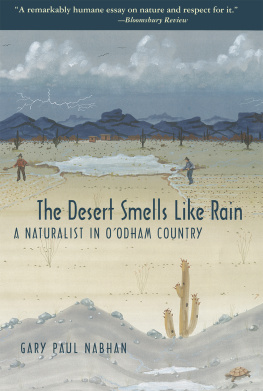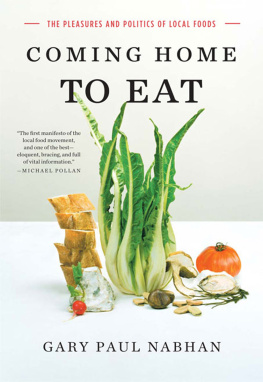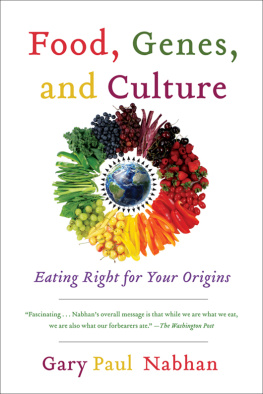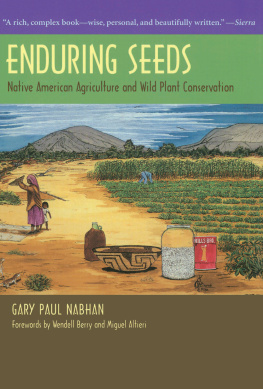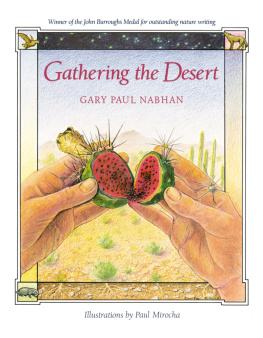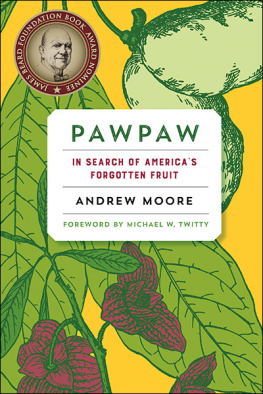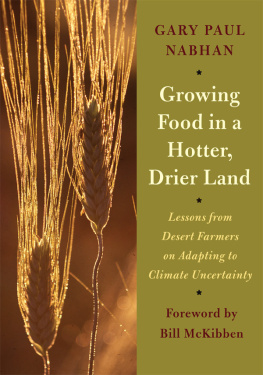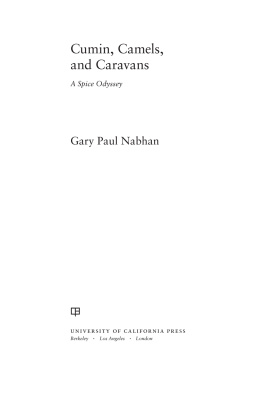Nabhan - The desert smells like rain a naturalist in Oodham country
Here you can read online Nabhan - The desert smells like rain a naturalist in Oodham country full text of the book (entire story) in english for free. Download pdf and epub, get meaning, cover and reviews about this ebook. City: Tucson, year: 2004;2016, publisher: University of Arizona Press, genre: Home and family. Description of the work, (preface) as well as reviews are available. Best literature library LitArk.com created for fans of good reading and offers a wide selection of genres:
Romance novel
Science fiction
Adventure
Detective
Science
History
Home and family
Prose
Art
Politics
Computer
Non-fiction
Religion
Business
Children
Humor
Choose a favorite category and find really read worthwhile books. Enjoy immersion in the world of imagination, feel the emotions of the characters or learn something new for yourself, make an fascinating discovery.
- Book:The desert smells like rain a naturalist in Oodham country
- Author:
- Publisher:University of Arizona Press
- Genre:
- Year:2004;2016
- City:Tucson
- Rating:3 / 5
- Favourites:Add to favourites
- Your mark:
The desert smells like rain a naturalist in Oodham country: summary, description and annotation
We offer to read an annotation, description, summary or preface (depends on what the author of the book "The desert smells like rain a naturalist in Oodham country" wrote himself). If you haven't found the necessary information about the book — write in the comments, we will try to find it.
Longtime residents of the Sonoran Desert, the Tohono Oodham people have spent centuries living off the landa land that most modern citizens of southern Arizona consider totally inhospitable. Ethnobotanist Gary Nabhan has lived with the Tohono Oodham, long known as the Papagos, observing the delicate balance between these people and their environment. Bringing Oodham voices to the page at every turn, he writes elegantly of how they husband scant water supplies, grow crops, and utilize wild edible foods. Woven through his account are coyote tales, Oodham childrens impressions of the desert, and observations on the political problems that come with living on both sides of an international border. Whether visiting a sacred cave in the Baboquivari Mountains or attending a saguaro wine-drinking ceremony, Nabhan conveys the everyday life and extraordinary perseverance of these desert people in a book that has become a contemporary classic of environmental literature.
Nabhan: author's other books
Who wrote The desert smells like rain a naturalist in Oodham country? Find out the surname, the name of the author of the book and a list of all author's works by series.

